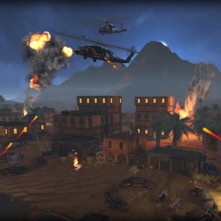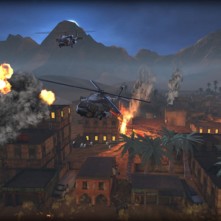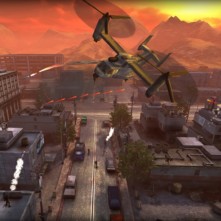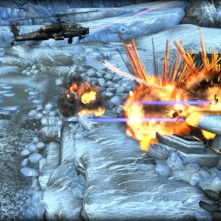The Apple II legacy of Naughty Dog
| September 15th, 2014 9:59 AM by Ken Gagne | Filed under Game trail; 1 comment. |
This time last year, I blogged about Steve Chiang, an Apple II game developer who went on to head Zynga, one of the modern gaming industry’s most powerful and prolific publishers. It’s no surprise that someone of such humble beginnings would rise to such a position: John Romero, Richard Garriott, and Will Wright are among those who continue to build upon the brands they launched on our 8-bit machine.
But one Apple II game developer has never rested on his laurels, creating franchise after franchise that could not be more disparate. In 1984, when Jason Rubin and high school buddy Andy Gavin were 15 years old, they founded Jam Software, later renamed Naughty Dog — something Gavin’s father declared would be "the dumbest thing you’re ever going to do." Their first games were Math Jam, Ski Crazed, and Keef the Thief, all for the Apple II. Later, Naughty Dog created Crash Bandicoot, the unofficial mascot for the original Sony PlayStation; for the console’s successor, they developed Jax and Daxter. After Rubin’s departure from Naughty Dog in 2004, the company crafted such franchises as Uncharted and the Last of Us for PlayStation 3 and 4.
This month, Rubin’s original studio turns thirty years old.
The above tribute video does not acknowledge the company’s Apple II roots, but doubtless the lessons Rubin, Gavin, and Naughty Dog learned on that platform defined not just their careers, but their creativity. Many of today’s franchises have ample access to RAM, storage, and processing power, yet they rarely show little innovation over the previous year’s games. By comparison, the Apple II, though powerful for its time, was so much more finite.
"Working inside limitations forces you to hone the details down to the absolute essentials, leaving something incredibly clean and focused," said Shigeru Miyamoto, creator of Mario, Zelda, and Donkey Kong. These are the limitations Rubin and Gavin worked within; as a result, Naughty Dog’s games are never the same as last year’s, except faster or prettier. Instead of beating a franchise into the ground, they have a dream, make it manifest — and then envision a new one.
To never stop dreaming: it’s the Apple II legacy.
(Hat tips to Eurogamer’s Jeffrey Matulef and CVG’s Mike Jackson)
UPDATE (26-Dec-14): Naughty Dog has now released a 49-minute 30th anniversary documentary. Hat tip to Aira Quintana.
















